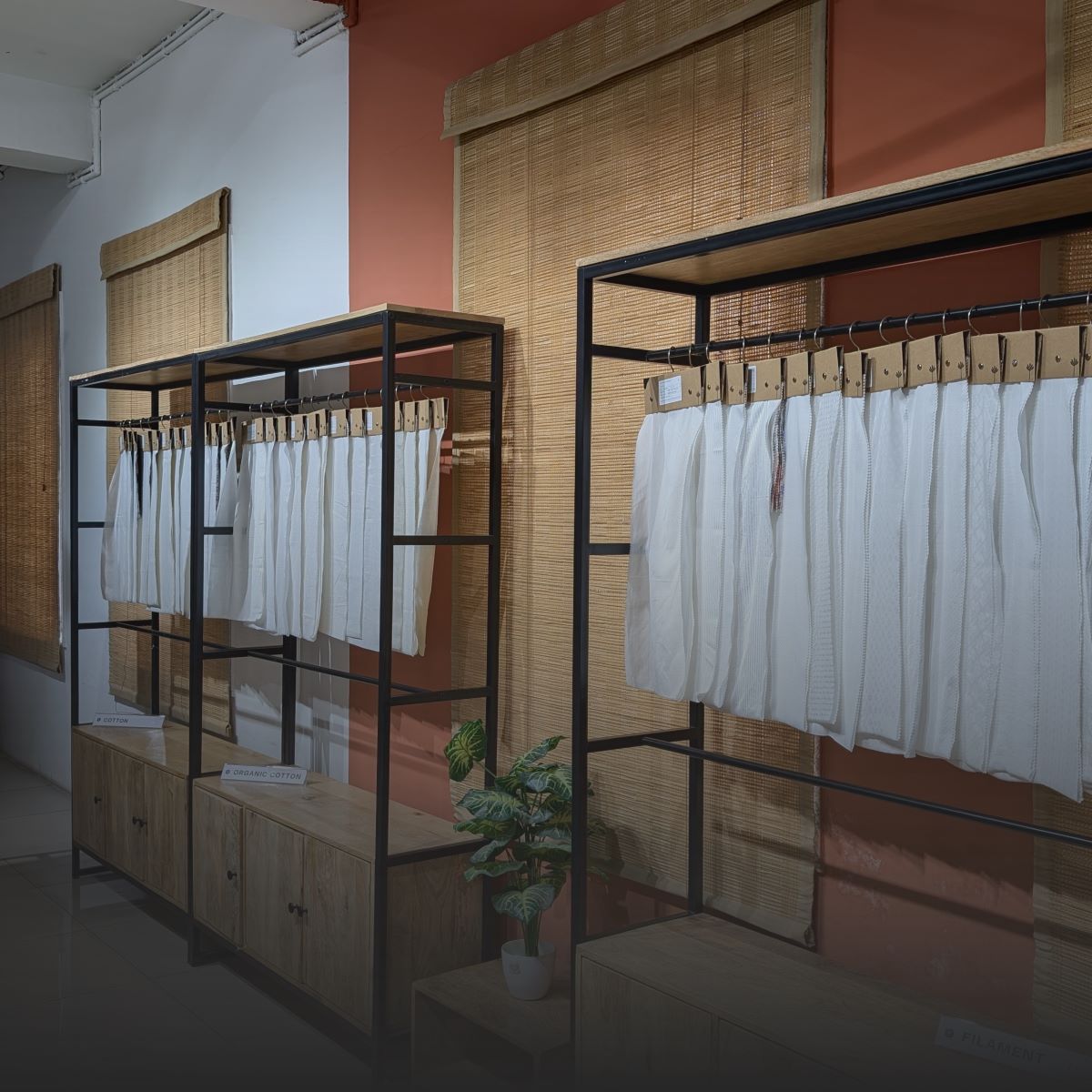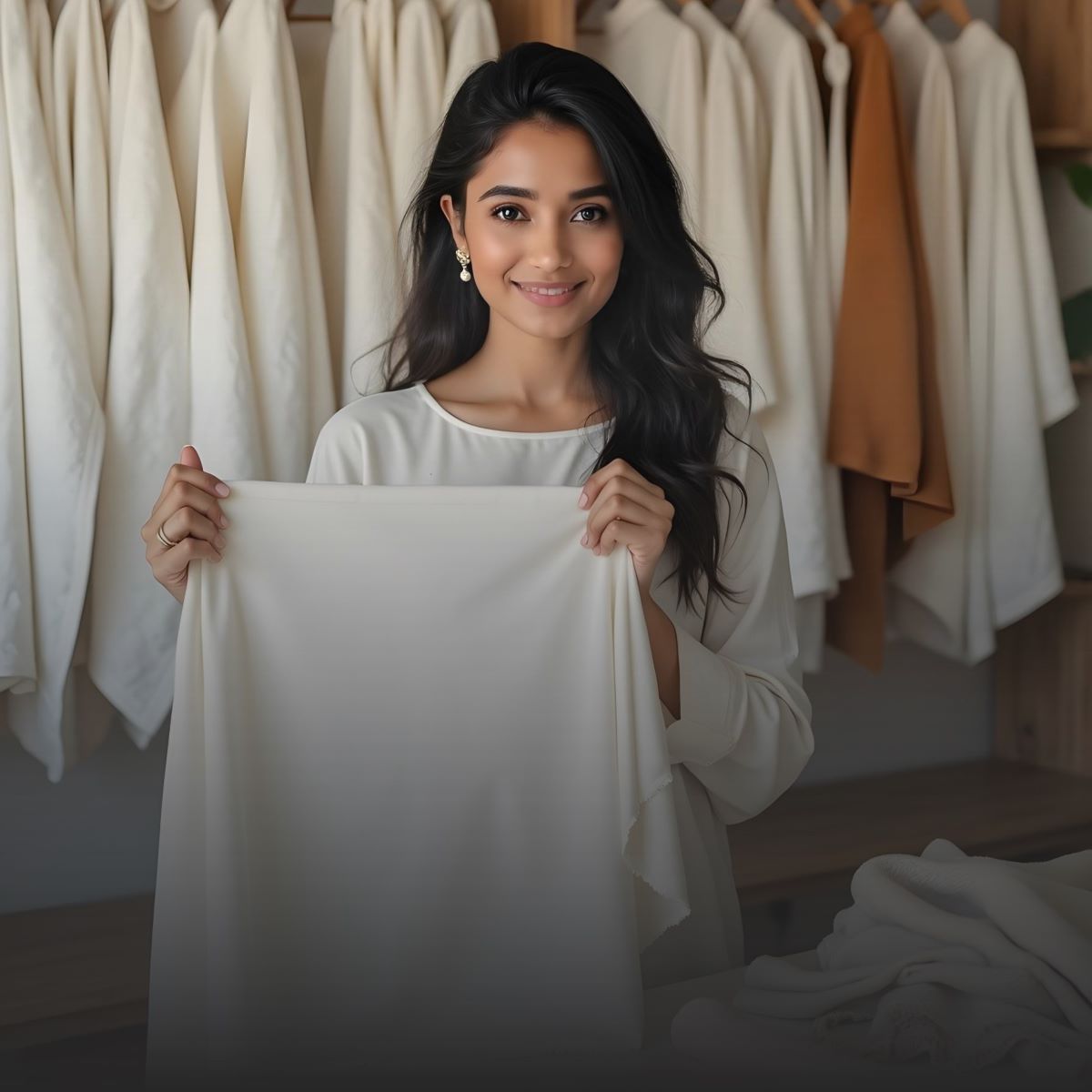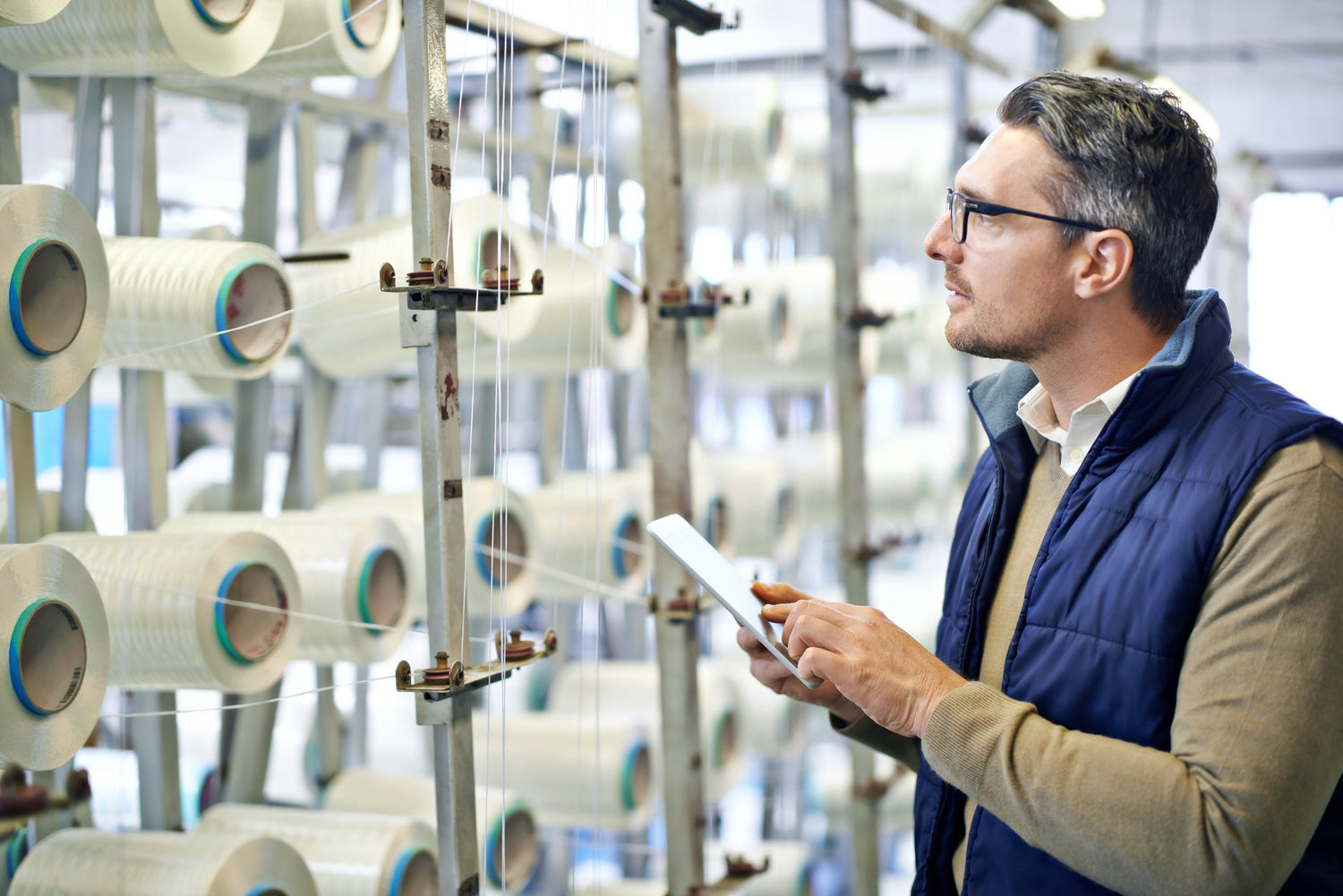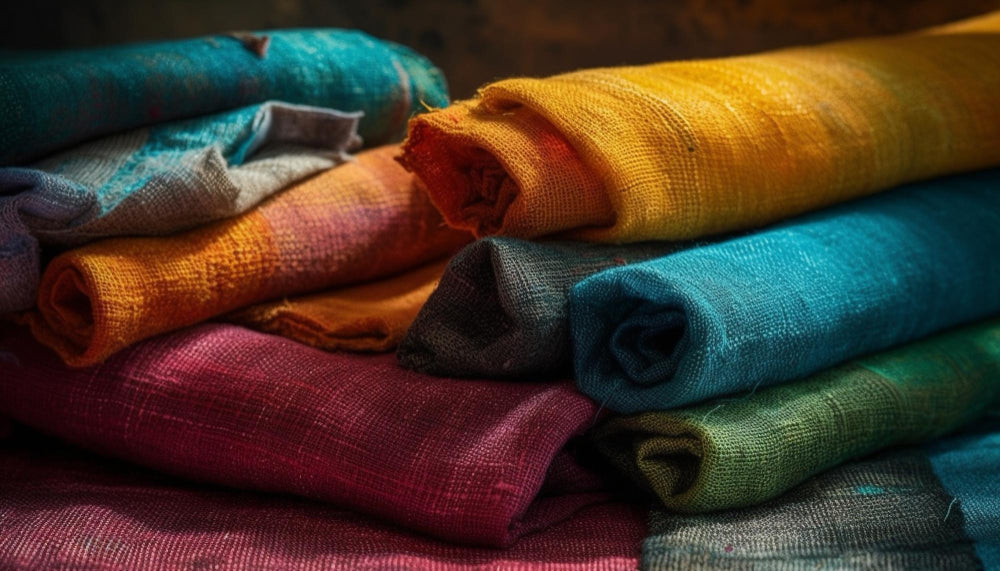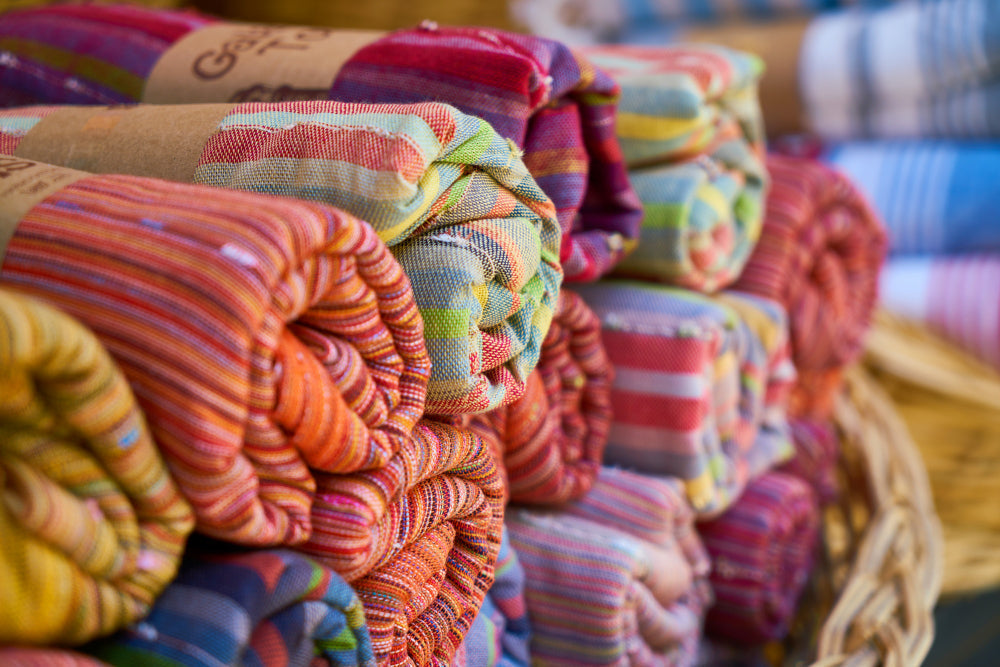In the textile and apparel industry, quality assurance begins long before the final stitch. For manufacturers, fabric is not just raw material; it is the core building block of any successful collection. If the fabric fails on parameters like colorfastness, shrinkage or construction, the entire batch of garments can be compromised. This is why fabric quality inspection and testing for manufacturers has become a non-negotiable process to ensure consistency, compliance and confidence in production.
When inspection is skipped or poorly done, the results often include delays, higher rejection rates and dissatisfied clients. On the contrary, trusted quality checks help streamline production, improve buyer confidence and reduce rework.
Key reasons why fabric inspection and testing are essential for manufacturers:
- Prevents production loss by identifying defects early in the process
- Reduces returns and rejections from buyers or quality auditors
- Ensures fabric consistency in terms of GSM, weave and construction
- Improves product performance through tested shrinkage and colorfastness
- Builds trust with buyers and retailers through certified quality reports
With the rise of sustainable and customized fabrics, having a thorough inspection and testing process has become even more important. Manufacturers today need partners who not only provide fabric but also support them with in-house labs, expert analysis and batch-wise quality documentation. These steps are vital for making your production scalable, reliable and ready for global markets.
In the next section, we will explore what exactly is covered in a typical fabric quality inspection and testing workflow and how it supports error-free garment manufacturing.
What is Fabric Quality Inspection and Testing in Manufacturing?

Fabric quality inspection and testing for manufacturers is a systematic process of evaluating raw or processed fabrics before they enter the production line. The goal is to ensure that the material meets both industry standards and buyer expectations in terms of performance, appearance, durability and compliance.
This process is more than just a surface-level check; it involves technical analysis through in-house labs or third-party testing units. Manufacturers rely on these insights to avoid unexpected production issues and to confidently deliver finished garments that are defect-free and long-lasting.
Common tests and checks included in fabric inspection and testing:
- Shrinkage Testing: Predicts how much the fabric will shrink after washing
- Colorfastness Tests: Measures resistance to washing, rubbing, perspiration and light
- GSM and Thickness Measurement: Ensures fabric weight matches required specifications
- Tear & Tensile Strength Tests: Verifies how well fabric holds up under stress
- Fiber Content and Blend Analysis: Confirms correct fiber composition and quality
These quality tests are typically performed at various stages, from greige fabric to post-processing, so that manufacturers can catch and correct any deviations early. In many advanced facilities like Fabriclore, a dedicated in-house inspection unit ensures that over 20 defect types are analyzed and certified reports are generated before shipping.
This comprehensive approach not only safeguards production efficiency but also helps brands build a strong reputation for consistent quality. In the upcoming section, we will uncover what manufacturers stand to lose when quality testing is ignored or inconsistent.
When and Why Fabric Manufacturers Need Quality Testing the Most

Fabric testing services play a crucial role during the early and bulk stages of production. Whether you are sampling for export, fulfilling a large order or aiming for sustainable certification, fabric testing for garment manufacturing ensures every meter of fabric meets the required performance and compliance standards.
Quality testing is not just about identifying flaws; it is about gaining full control over the output, staying true to design specs and maintaining the integrity of the final product. For manufacturers, testing helps reduce uncertainty and strengthens client trust.
Here are the key stages when textile quality verification becomes non-negotiable:
-
Bulk Sourcing for Large Production Runs
Ensure consistency in GSM, weave and color across thousands of meters to avoid rejections. -
Sampling and Product Development for Export Markets
Export clients often demand certified and tested swatches before confirming orders. -
Verifying Sustainable Claims (GOTS, AZO-Free, etc.)
Environmental compliance starts with testing inputs for chemical safety and traceability. -
Ensuring Compliance with Client Specifications or Certifications
Every buyer has a checklist, shrinkage tolerance, colorfastness or tear strength. Testing validates those requirements upfront.
For manufacturers operating in a highly competitive market, fabric testing helps convert precision into profit. It allows brands to launch confidently, scale faster and minimize the risk of costly remakes or returns.
Next, we will break down the exact features you should look for in a professional fabric testing and inspection partner.
Read Also: Sustainable Fabric Dyeing & Quality Inspection: Ensuring Excellence In Eastern European Textiles
Common Fabric Defects and What Testing Helps Detect

Before any fabric is turned into a finished garment, identifying and addressing textile quality issues is essential. Without this proactive step, manufacturers risk facing costly rejections, remakes or customer complaints. By using a proper fabric inspection checklist, manufacturers can spot both visual and performance-based flaws that compromise quality.
Let’s look at the most common fabric defects and how dedicated testing helps detect and eliminate them early in the production pipeline:
-
Visual Flaws: These include weaving errors, holes, knots or printing misalignments. Standard fabric inspection detects these defects using visual inspection methods like the 4-point system, helping brands reject flawed rolls before they reach the cutting table.
-
Physical Problems: Variations in GSM, seam slippage or excessive shrinkage are physical quality concerns. These are identified through lab testing methods that measure weight, dimensional stability and tensile strength to ensure fabric behaves consistently in production and end use.
- Color and Finish Issues: Problems like pilling, poor rubbing fastness and color bleeding can ruin the appearance and durability of finished garments. Through colorfastness testing ( washing, rubbing and light), these finish defects are flagged and corrected.
Each of these testing steps ensures the fabric meets performance expectations before stitching begins. This not only protects the manufacturer’s timeline and budget but also guarantees a higher satisfaction rate for clients and consumers.
In the next section, we will dive into what a standard fabric testing and inspection process looks like so you know what to expect from a reliable testing partner.
What a Standard Fabric Testing and Inspection Process Looks Like

A reliable fabric testing process ensures that every meter of material meets the required specifications before it enters the production line. Manufacturers who follow a structured inspection and testing workflow are more likely to avoid delays, rejections and production errors. Here is how a typical fabric quality control process unfolds across reputable platforms and mills.
One of the most commonly used industry frameworks is the 4-point inspection method, where each visible defect is assigned a penalty point based on its size and severity. The total points per 100 square yards help determine if a roll passes or fails inspection. This method is effective for identifying weaving flaws, misprints and other surface-level issues.
Looking at fabric is not enough; testing is also important to check how it performs. Some key tests include:
-
Shrinkage Testing – Ensures that the fabric retains size after washing or steaming.
-
Tear and Tensile Strength – Measures resistance to breakage and ensures durability.
-
Color Fastness – Tests the fabric’s resistance to fading or bleeding when exposed to washing, rubbing or light.
- pH Level Testing – Confirms that the fabric is skin-friendly and chemically balanced.
Testing is typically carried out under controlled environments that follow set Standard Operating Procedures (SOPs). This includes proper lighting for visual inspection, calibrated equipment for lab tests and clean rooms for fabric handling.
Before shipping, final quality checks are done at the warehouse. Each fabric roll is tested, labeled, and recorded. This makes sure only checked and approved fabric reaches you, building trust and lowering the chance of problems.
As we move forward, we will explore who actually provides these inspection and testing services, including global labs and tech-integrated platforms.
Read Also: Fabric Quality: 4-point Quality Inspection System That Every Fashion Brand Should Follow
Who Provides Fabric Inspection and Testing Services?

Finding the right provider for fabric inspection and testing is essential for manufacturers aiming to meet global quality standards and reduce production risks. If you are producing for domestic retail or international export, reliable testing can make or break your supply chain efficiency.
Here are the key types of providers offering textile quality testing:
- Global third-party labs like SGS, Intertek and Bureau Veritas
- Local textile labs attached to government institutions or private units
- In-house mill testing units operated by large-scale fabric manufacturers
- Digital-first platforms such as Fabriclore with integrated testing and sourcing
Different fabric testing options offer different levels of support. Third-party labs are good for official certificates but can be slow and costly. Local labs are quicker but might not follow standard methods. Fabriclore gives you both fabric sourcing and quality checks in one place, perfect for private labels and growing brands.
By using a platform that integrates fabric testing services within its sourcing model, manufacturers save time, reduce follow-ups and get transparent reports with every order. This ensures consistency from the first swatch to the final roll.
Why Fabriclore is a Trusted Fabric Testing Partner for Manufacturers

When it comes to fabric quality inspection and testing, Fabriclore has built a reputation for offering end-to-end reliability that fashion businesses can count on. From sourcing to shipment, our in-house systems are designed to ensure every meter of fabric meets global standards without the hassle of managing multiple vendors.
Here is why Fabriclore is trusted by 400+ private labels and apparel manufacturers:
- In-house testing unit with 20+ defect checkpoints, including shrinkage and colorfastness
- Transparent specs on count, construction, GSM, weave and fold length
- Detailed inspection reports to verify quality and spec match
- AZO-free printing and GOTS, FSC and BCI certifications available on request
- Support for low MOQs, making it ideal for small-batch or custom production
- Global shipping with packaging designed to protect fabrics in transit
- Expert consultation from concept to final delivery
At Fabriclore, quality is not an afterthought; it is integrated at every step. Each order is inspected at our dedicated 10,000 sq. ft. warehouse, tested for critical parameters and packed securely using weather-resistant packaging. Whether you are building a fashion collection or sourcing fabric for exports, our in-house testing and inspection model ensures zero rejections and faster production cycles.
With technical support from trained textile engineers, you do not just buy fabric; you get a strategic partner who helps you avoid costly quality surprises.
Read Also: Which Companies Provide Fabric Dyeing and Quality Inspection Services?
How Fabric Quality Testing Helps Manufacturers Save Time and Money

Investing in fabric quality testing services is not just about avoiding defects; it is a strategic move that saves fashion manufacturers significant time, money and production headaches. Whether you are scaling collections or preparing for export, quality assurance directly impacts your bottom line.
Here is how fabric testing for garment manufacturing creates tangible business value:
- Prevents production losses due to faulty fabrics and rejections
- Minimizes rework and sampling delays, especially in custom or sustainable collections
- Boosts buyer confidence by meeting international quality standards
- Reduces wastage caused by incorrect GSM, shrinkage or color mismatch
- Speeds up product launches with reliable fabric specifications and ready-to-stitch quality
Imagine discovering a major colorfastness issue after stitching 500 garments; that is the kind of risk Fabriclore helps you avoid. With rigorous in-house fabric inspection and testing protocols, you receive verified material that matches both visual and technical expectations from day one.
Moreover, when you are working with global buyers or marketplaces that demand certifications like GOTS or AZO-free processing, Fabriclore’s testing-backed sourcing model becomes a powerful asset in your supply chain.
By ensuring consistency across batches, maintaining spec transparency and offering low MOQs for sampling, we help you launch faster, reject less and build lasting trust with your clients.
Conclusion: Choose a Fabric Partner That Guarantees Tested Quality
If you want smooth production and top-quality results, fabric testing is not optional. It helps you catch defects early, avoid issues like shrinkage or color bleeding and meet buyer requirements. With the right partner, you save both time and money by reducing rework and production delays.
Fabriclore offers end-to-end fabric solutions, including in-house quality testing, transparent specifications and certifications like GOTS or AZO-free on request. With expert support, low MOQs and global delivery, we are the ideal sourcing partner for fashion brands and manufacturers who care about quality from the first step.
FAQs
Q1. What is the quality inspection of fabric?
Fabric quality inspection is the process of checking materials for defects like weaving faults, color issues, shrinkage or holes before they are used in production. It helps ensure the fabric meets quality standards and matches buyer requirements before garments are made.
Q2. What is QC and QA in the garment industry?
QC (Quality Control) is the step-by-step process of checking fabric or garments for defects during and after production. QA (Quality Assurance) is the overall system that ensures processes are set up to prevent defects from happening in the first place. Both work together to maintain high-quality output.
Q3. How do you test fabric quality?
Fabric quality is tested using methods like shrinkage testing, colorfastness tests, GSM measurement, tear strength checks and visual inspection for flaws. Many manufacturers also follow the 4-point inspection system to evaluate fabric based on the number and type of defects found.
Q4. What is the most popular fabric inspection system?
The 4-point inspection system is one of the most widely used methods in the textile industry. It assigns penalty points to defects based on their size and severity. If the total score remains within an acceptable limit, the fabric is approved for use.
